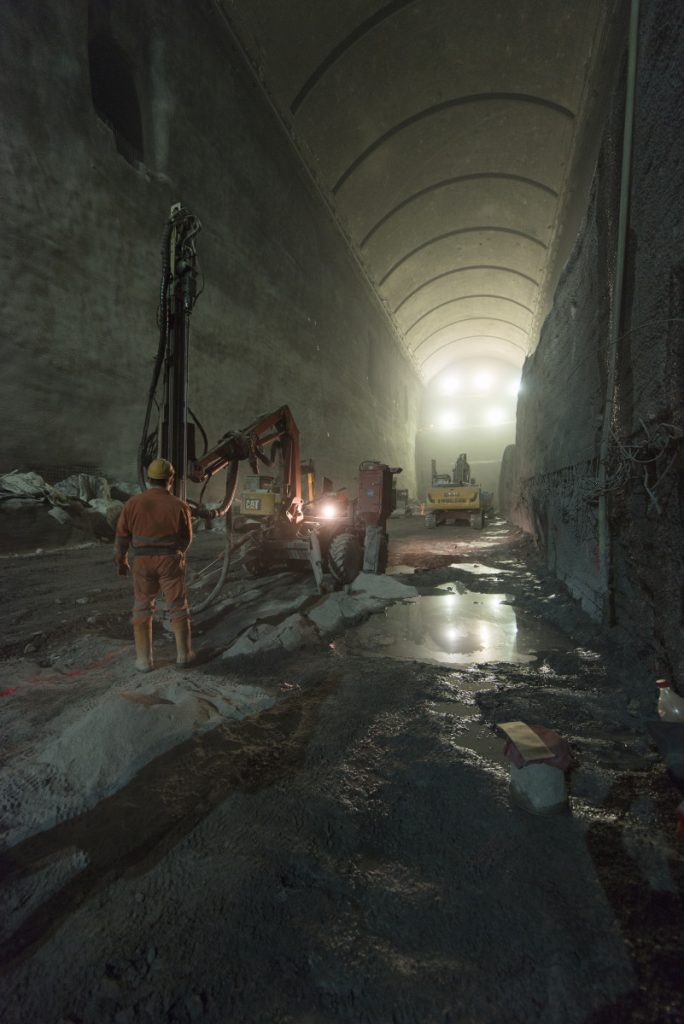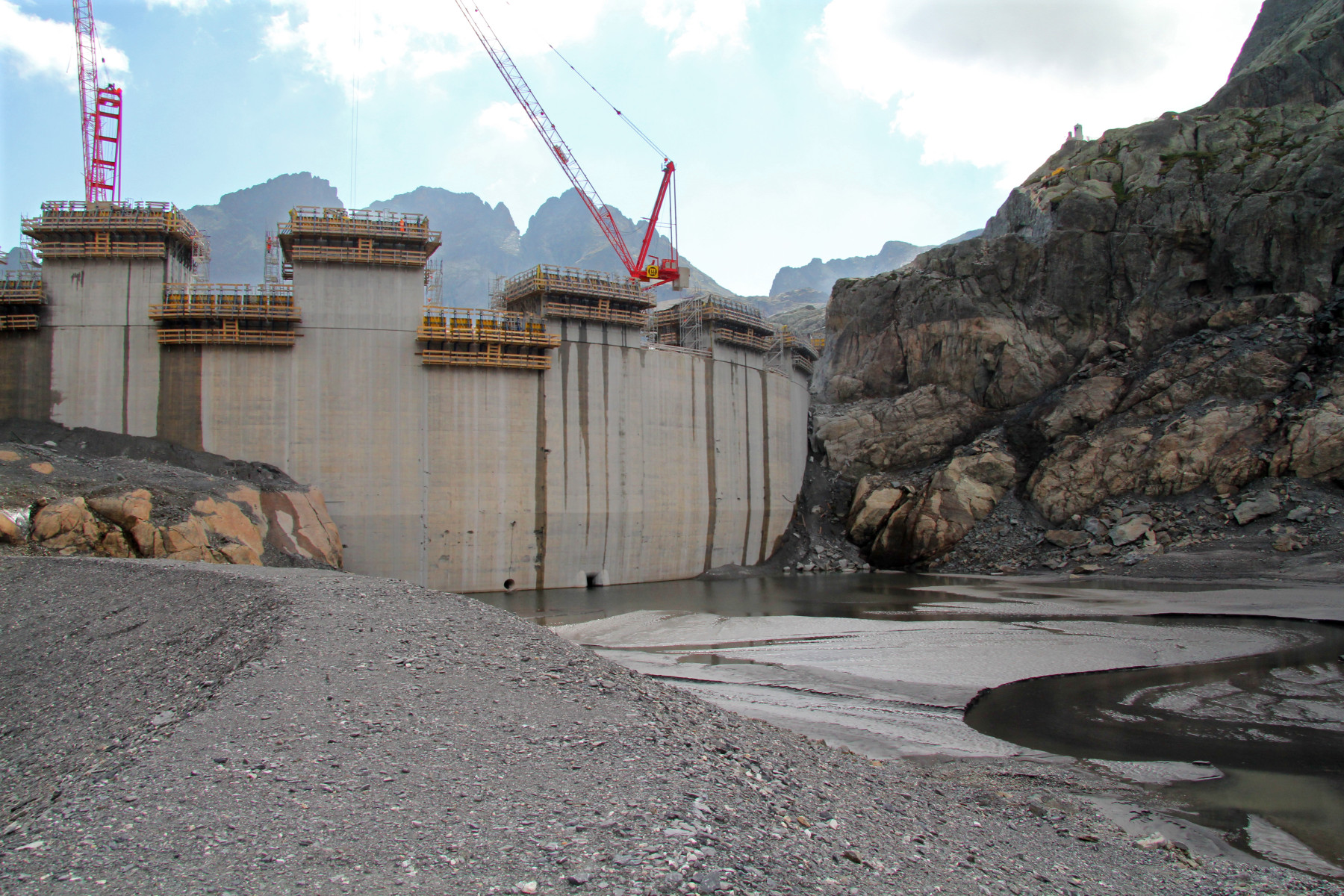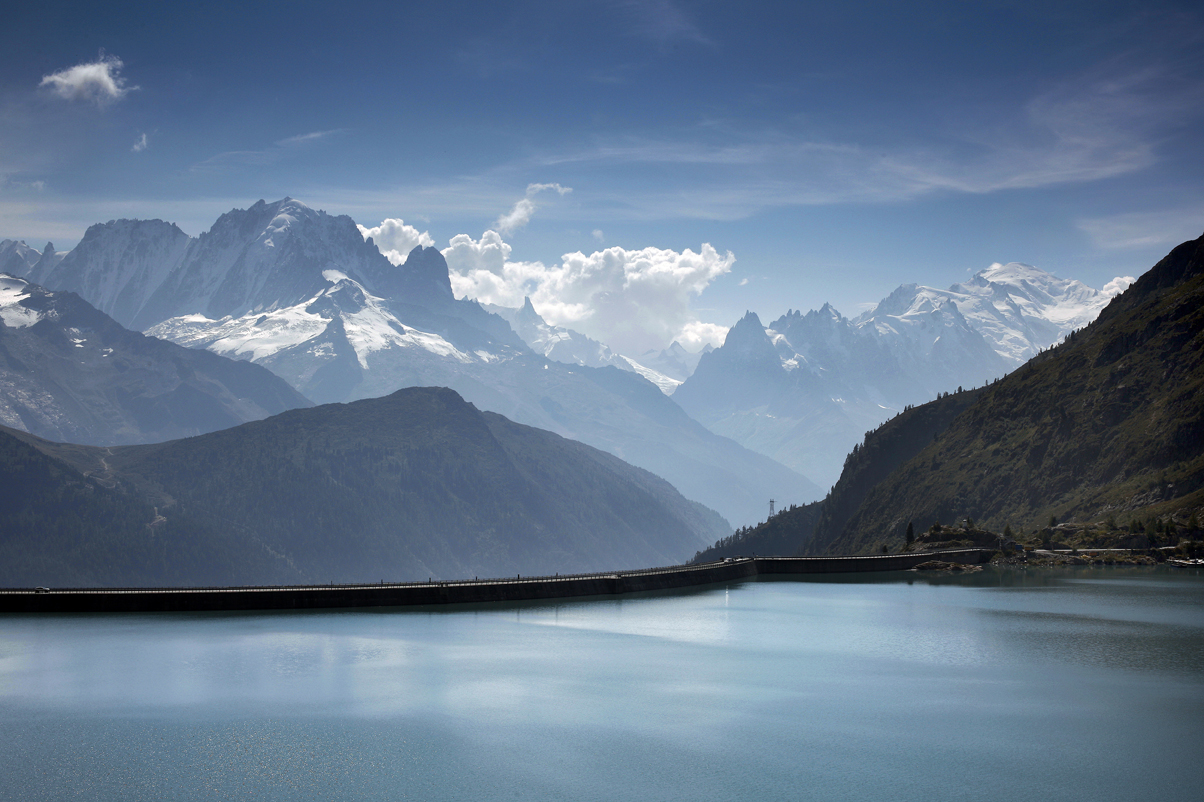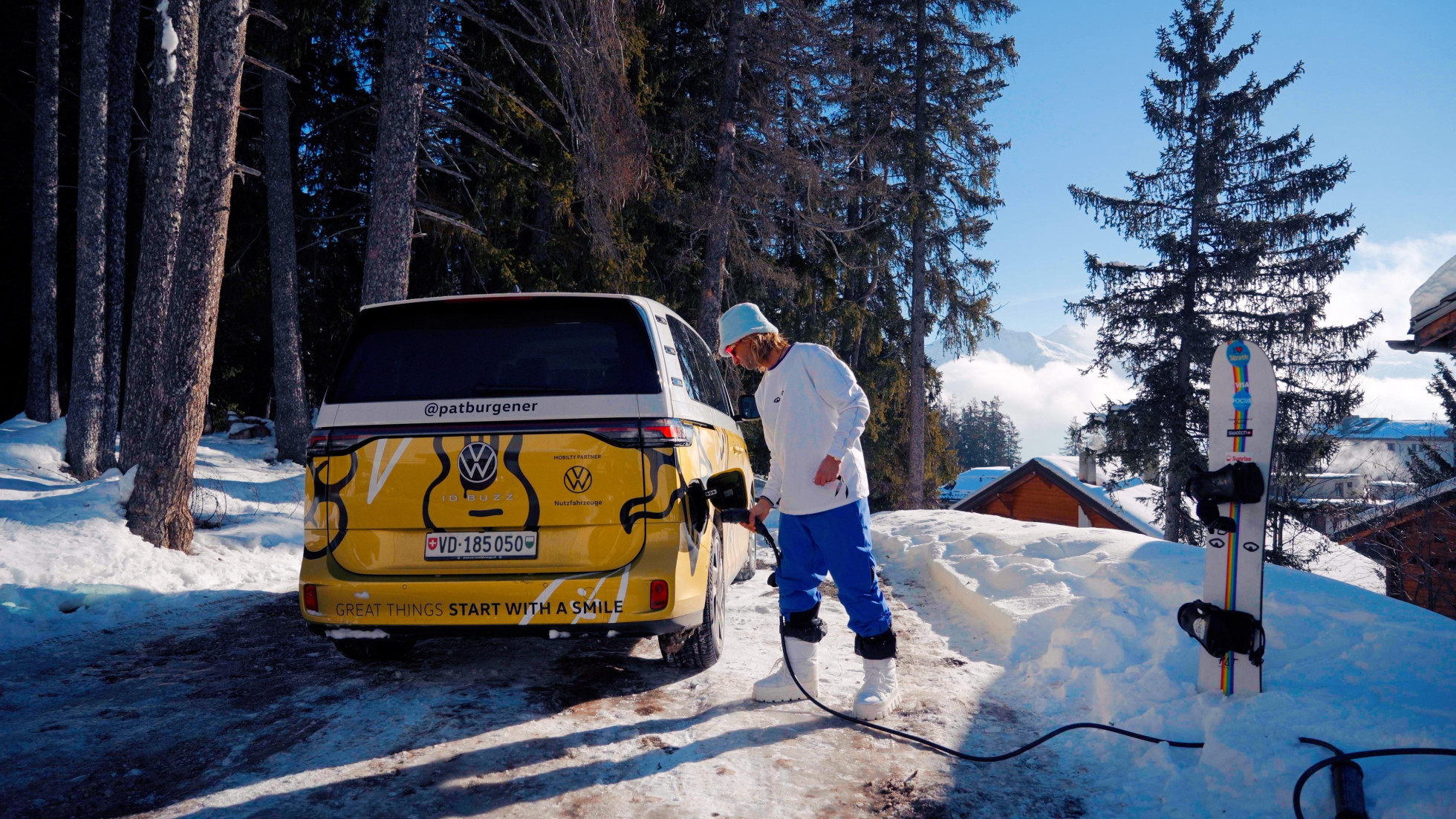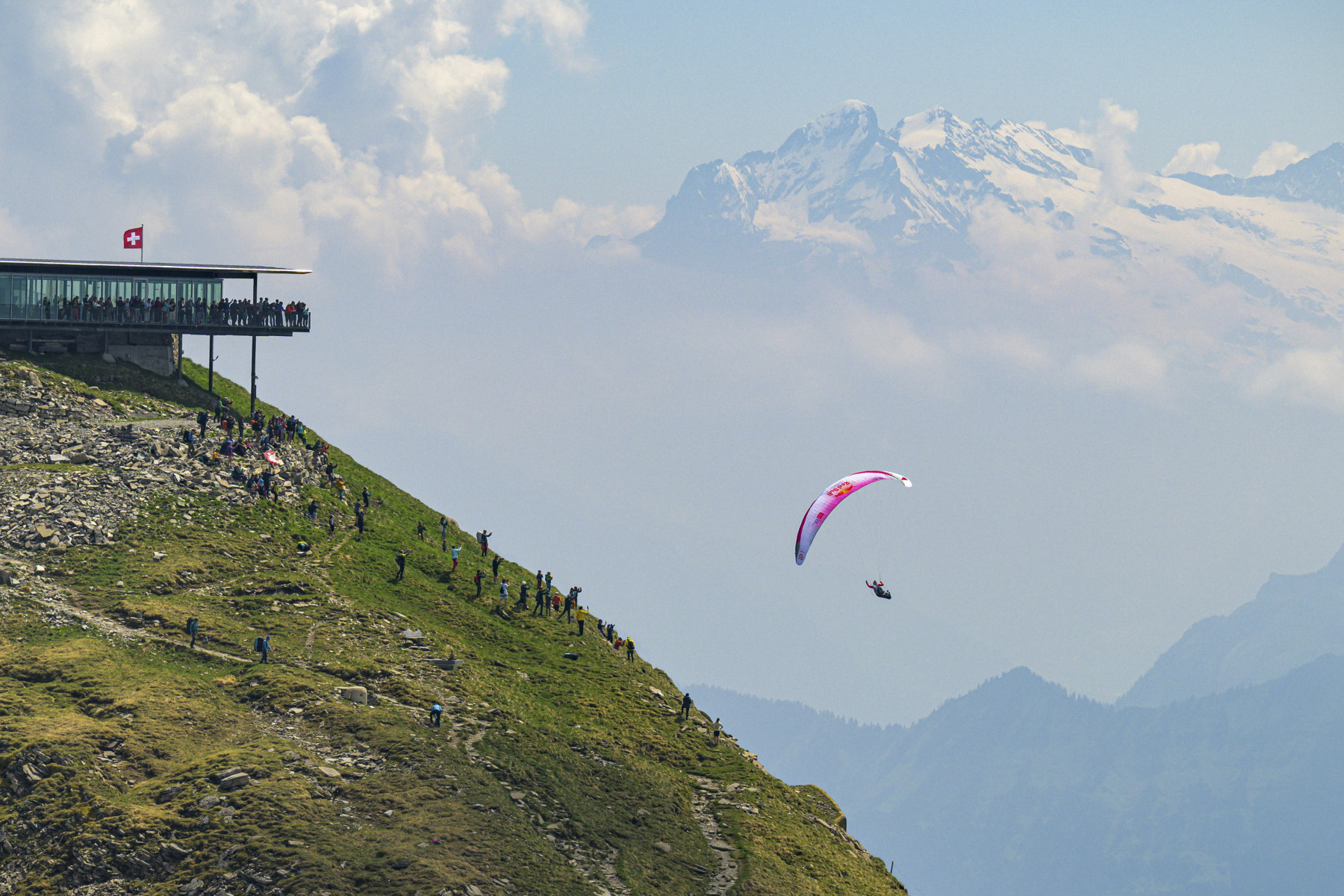
The same gravity that powers skiing, mountain bike and white water descents provides Hydro Electricity, a major source of power from the Alps.
The mountainous geomorphology of the Alpine arc mean that hydropower presents a significant energy resource producing environmentally-friendly electricity but as with any power source you can’t keep any in reserve and even the best solar and wind power stations are useless at night and on windless days.
Electricity grids cannot store energy, so electricity consumption and production from a power plant must always be balanced and energy suppliers have to respond to consumption fluctuations or short-term peaks quickly to meet capacity.

Pumped storage power stations as batteries.
Pumped storage power stations allow spontaneous compensation for the over-production or under-production from wind and solar energy sources and if necessary permit the temporary storage of the electricity for days or weeks. Crucial to the flexibility of these power stations is the size of the available reservoirs.
Pumped-storage hydroelectric power plants are one way to produce the energy needed within minutes and store surplus energy reliably, day and night. Using upper and lower reservoirs water is channelled downhill from the upper reservoir through turbines, which in turn drive generators. When surplus energy is generated, it is used to pump water back up from the lower reservoir to the one further uphill. This means there is a continuous store of potential energy which can be used to generate power during peak consumption periods.
The concept of storing energy with the aid of water power is not new and the first pumped-storage power plants were built in Central Europe in the 1920s. However, such power plants are not necessarily very efficient as pumping the water back uphill requires more energy than can be recovered.
Nevertheless, pumped-storage plants are needed to compensate for the fluctuations in demand for electricity so the systems are balanced so that electricity produced in off-peak periods such as night time for instance, is used to pump water to the upper reservoir, which is then used to produce electricity when demand is high.
The Nant de Drance Alpine power station which in the Swiss Alps is one of the most modern pumped hydro facilities in the world. This joint venture, under the management of Alpiq and with the participation of the Swiss Railways (SBB), IWB and FMV started in 2008 finished in 2017, connects two reservoirs: the Lac d’Emosson, which at 227 million cubic meters is the second-biggest reservoir in Switzerland, and the higher Lac du Vieux Emosson reservoir, situated at 2,200m above sea level which currently holds 13.5 million cubic meters of water, but by raising the dam wall by 20 meters doubled the original capacity.
Six 150-megawatt turbines will be powered by the stored energy held in the reservoirs driving generators capable of supplying 625,000 households with electricity. The turbine station is being built in a church sized 190m long, 52m high cavern situated between the two reservoirs at 1,700m above sea level with two separate water channels connecting the two reservoirs.
The complex construction work required a 5.6km-long access tunnel being bored into the mountain, then making a machine cavern, a transformer cavern and two parallel waterways consisting of inlet and outlet structures, upstream and downstream pressure tunnels and vertical pressure shafts.
The new plant with its 900-megawatt pump and turbine capacity contributes significantly to Switzerland’s future energy security. Most of the facility is underground and according to the operating company, the power plant will have the minimum impact on the surrounding environment.
The work for the Nant de Drance excavation work for the access tunnel took longer than planned due to geological problems. In winter work stopped on all construction sections above 2,000m as they can only be reached from the outside and therefore where under snow.
A tunnel-boring machine with a 10m drill head chewed into the mountain at an average rate of 20 meters a day, depending on the type of rock. Impressively, the record for one day being 40 meters.
More than half of Switzerland’s electricity production comes from hydroelectric power generation. With the planned phase-out of nuclear power, the Swiss Federal Council wants to expand hydropower. However, the available potential is really quite limited, and even in the best-case scenario will not be more than 3.2 TWh or around 10% of the current hydropower generation. One third of this will come from the upgrading of existing power stations, and one third each from the construction of new small and new large hydroelectric power stations.
Hydropower is not only necessary for Swiss electricity supply, but is also an important economic factor, particularly in the mountainous regions as the local cantons and communities hold sovereignty over the water and lease the water for an agreed period, usually 80 years, to be used by the electricity companies, receiving concession fees, water rates and tax revenues in return.
Switzerland tries to ensure a balanced yet practical relationship between the protection of nature and the environment and the use of which has resulted in the implementation of large energy-economic projects such as Nant de Drance and others such as Linth-Limmern or Lago Bianco. However it is yet to be seen if the Swiss population, which in their various referendums have always placed great weight on nature conservation, will agree with more hydro projects that will have greater effects of the environment and surrounding nature.
Hydroelectric power while it can offer a relatively sustainable solution to the energy requirements, it can also be ecologically destructive to the landscapes and freshwater systems.
There are around 550 hydro plants in the Alps with more than 10 MW and 2900 GWh of annual output (Source: Alpine Convention). This kind of pressure severely impacts on the ecological integrity of Alpine rivers and lakes. These energy systems require widespread river and stream diversions and the construction of large storage reservoirs that destroy natural living spaces. Hydroelectric power plants constitute one of the most serious threats to natural Alpine river systems, interrupting migration passageways for animals and wildlife and causing frequent flooding.
Although in theory hydroelectric power can be considered ‘clean’ energy, using water and gravity the generate electricity, many hydroelectric installations in the Alps use cheap coal or nuclear sourced power to pump water back up to the reservoir.

